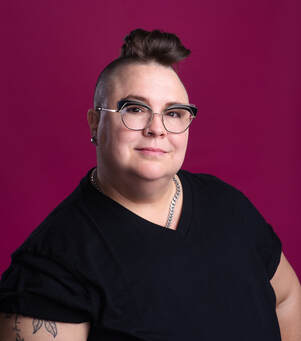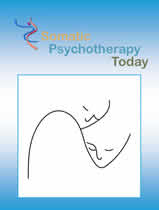How to stay with the how: Some pedagogical suggestions on assisting the mindful sensing...
Many people, myself included, believe that the ability to clearly sense emotions and to experience bodily sensations is crucial for our mental, emotional, and physical health, but it does not come easy for everybody. The following pedagogical suggestions are based on my personal experiences and difficulties with mindfulness meditation and my studies of and experiences with Gurdjieff awareness-work, the Alexander-technique, Eugene Gendlin’s Focusing, Fritz Perls´ gestalt therapy, and especially Wilhelm Reich with his appreciation of “the how” when it comes to bodily expression, specifically contact with reality, with the body, with the emotions, with the self and with the “other. I offer that one can argue that to be concretely aware of one’s body's experiences connects us to the “here and now” and to the experience of reality, as opposed to self-deception in diverse forms, and that it is to be expected that the endeavor will be met with resistance and that assistance may be sorely needed.hat are reported (like stress reduction, attenuation of diverse clinical symptoms etc.)
The Polyvagal Theory in Therapy, Engaging the Rhythm of Regulation
I was intrigued when I first came across Stephen W. Porges’ Polyvagal theory in 2008 reading his article entitled, Don’t Talk to Me Now, I’m Scanning for Danger. Porges’ Polyvagal theory redefined our former understanding of the autonomic nervous system, an understanding which has been in place since the mid 1800’s.
In 2010, at a Somatic Experiencing® training, when my co-trainees and I were grappling with how to apply the theory, we made up lyrics and sang them to the tune of “I Loves You Porgy” from Gershwin’s 1935 opera “Porgy and Bess.”
“We love you Porges, we’re polyvagal,
We love your theory, though it’s complex,
We want to use it, just please explain it,
Write a synopsis, that would be best.
We love you Porges. . . .”
(I’ll spare you the rest, but you get the point.)
Repeated requests at workshops and conferences for a user-friendly synopsis of his scholarly information as presented in The Polyvagal Theory, Neurophysiological Foundations of Emotions, Attachment, Communication, Self-Regulation (2011) prompted Porges to create his more recent publication, The Pocket Guide to the Polyvagal Theory: The Transformative Power of Feeling Safe (2017).
Going another step forward, Porges and co-editor Deb Dana published their newest anthology, Clinical Applications of the Polyvagal Theory: The Emergence of Polyvagal-Informed Therapies (2018). Now, Dana offers her well-developed method of incorporating the Polyvagal theory into clinical practice.
In her book, The Polyvagal Theory in Therapy, Dana offers the Polyvagal theory to psychotherapists as an elegant new science-based way of working with the body.
So you don’t do Facebook?
As many of you may know, SPT Magazine will no longer send emails to our subscribers—simply put, not enough people opened our notes to make it fiscally responsible.
We will still be publishing our excellent features and articles, our reviews and author reflections. And you can still access everything via our website at www.SomaticPsychotherapyToday.com, we just will no longer send out our twice a year links for our publications.
And we have heard from many of you that you do not do Facebook.
Serge Prengel has generously offered to share our links and our articles with his LinkedIn group, Somatic Mindfulness in Psychotherapy at http://linkedin.somaticperspectives.com and via his Facebook page
https://www.facebook.com/somaticmindfulness/ . He will also share our information in his newsletters.
We are grateful for Serge’s support and his willingness to share our publications beyond our website and our Facebook page https://www.facebook.com/SomaticPsychotherapyToday/
Interested in being Editor-in-Chief of an international peer reviewed Journal?
The EABP and USABP are seeking applications for their new Editor-in-Chief (an EABP member) and their new Deputy Editor (USABP member). The role starts January 2019.
Editors will work with their new managing editor, Antigone Oreopoulou, thus forming the IBPJ editorial team. The team is responsible for:
identifying the journal's aims, scope and direction
maintaining the professionalism and quality of the Journal content
publishing the journal
They are seeking experienced clinicians with good writing skills (having published one's own book or articles) and a good sense of the English language (knowledge of APA style and formatting is also necessary), organizational skills and communications skills are also needed.
If you are interested, please contact Antigone Oreopoulou at [email protected]
Defne Dinler
SPT is pleased to introduce our newest columnist: Defne Dinler from Denver, Colorado, USA.
Defne is a licensed somatic counseling psychotherapist, specializing in body psychotherapy....
DEFENSES: THE ROAD MAP TO YOUR ESSENCE
What is your relationship to your defenses? Can you name them? Can you name your self-destructive habits? Maybe notice where you keep feeling helpless or stuck?
From a psychological perspective, defenses are survival skills that resulted from negative childhood experiences—when our external environment threatened our internal sense of safety and wellbeing, be it overwhelming feelings such as abandonment, fear/terror, feeling unloved and unlovable and so forth. In response, we created survival skills to endure destructive emotional, physical and spiritual experiences. Due to our codependence on our caretakers, our defenses truly become survival skills.
The most mainstream defenses include denial, rationalization, repression, dissociation, projection, manipulation, caretaking and even humor. Although these skills allowed us to grow from child to adult, I often wonder about our relationship to our defenses as adults. A great survival skill for a child may not serve you as an adult.
Can you help a doctoral student’s research project?
"I am researching perspectives of self-disclosure and comfort level using self-disclosure amongst professionals in the field of psychology with different amounts of clinical experience. The study will take no more than 15 minutes of your time. The study involves completing a short demographic and clinical questionnaire, and four open-ended short response questions. All participants who choose to participate will have an opportunity to win one of two $50 Visa gift cards!
SPT Winter 2018 is now digital
We've just posted our Winter 2018 issue on issuu.com so our readers can access our articles digitally. And you can pay for a print copy as well.
Our Winter issue deals with addiction. Drugs, alcohol, sex, gambling, shopping, food, social media, digital games, movies, whatever the ‘substance’ the effect is the same—numb out, dissociate, flee from the perception of pain (be it physical, psychological, emotional, spiritual). The number of people who are considered addicts has reached pandemic proportions—no one place, no one race, no one culture is free of this infectious disease. But, is it a disease or is it a reflection of our inability to self and/or mutually regulate our affective state? Are these behaviors, labeled as addiction or addictive, are these monikers—addict, addicted— accurate? Or, do labels simply shadow deeper manifestations motivating people to reach for something to quell their emotional fluctuations, to smooth the ups and downs in their bodily being?
These questions and more are considered in our Winter issue. Our contributors share their thoughts on addiction, on behavioral patterns that become ‘stuck’, automated, reactionary in the face of overwhelm and affective arousal. Possible physiological causes are considered—think trauma and all that comes with that terminology—and potential interventions are pondered.
Ol’ Doc Kisch’s Pseudo-Psychic Setback Theory
I had just gotten my first job at Kent State University Counseling Center after finishing my course work at the University of Kentucky and my internship at Wake Forest University. I lived in the Shaker Heights district of Cleveland and was driving down Route 480 that turns into Route 14 toward work at Kent when I was struck by a deep wave of depression. I felt like I used to feel earlier in my life. At some point I got off the road onto the sideline and just sat and was struck by the deep dark feelings of depression I was having and could not understand why that was happening. Here I was, having achieved what I was searching for my entire life, a position as a psychologist, and I was so summarily bummed out. After catching my breath, I continued driving to Kent.
Then an unusual event occurred when I was passing through the city of Twin Lakes. It was foggy out. The lake was barely visible. But on one of the lakes, just through the dense fog, I could perceive a rower in his boat. It was so striking to me that I had to stop. Amazingly enough I had my camera with me. I pulled it out, got out of the car, took his picture and then continued to work. At the time of this event, the thought did not strike me that perhaps I identified with that rower in the midst of the fog — my old feelings of depression.
Once I got to Kent and focused on work the depression lifted. On my way back to Cleveland on Route 14, I was contemplating, which I often did on the drive to and from work. My thoughts turned to the depressive episode in the morning. I was no longer feeling depressed on the return trip. I was struck by the fact that in spite of feeling depressed earlier, I stopped to exercise my creative abilities and took the photograph of the fisherman. And during the day, I did not remain depressed. I did work demanding higher order reasoning, knowledge of human behavior and emotional wounding, as well as compassion. What happened in the morning was an unusual and temporary setback. It was a pseudo-setback not characteristic at all of where I was in my mental health and functioning.
Call for papers is now open
EABP BERLIN CONGRESS
BODY PSYCHOTHERAPY AND CHALLENGES OF TODAY
6-9 SEPTEMBER 2018
REGISTRATION IS NOW OPEN
CALL FOR PAPERS IS NOW OPEN
According to the EABP's recent newsletter:
The next...














